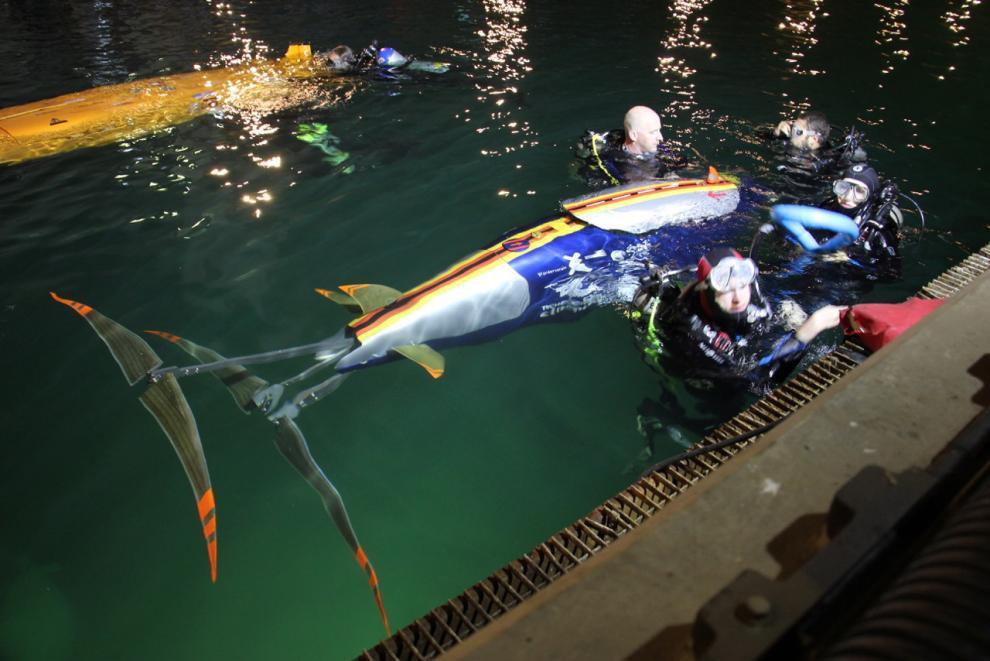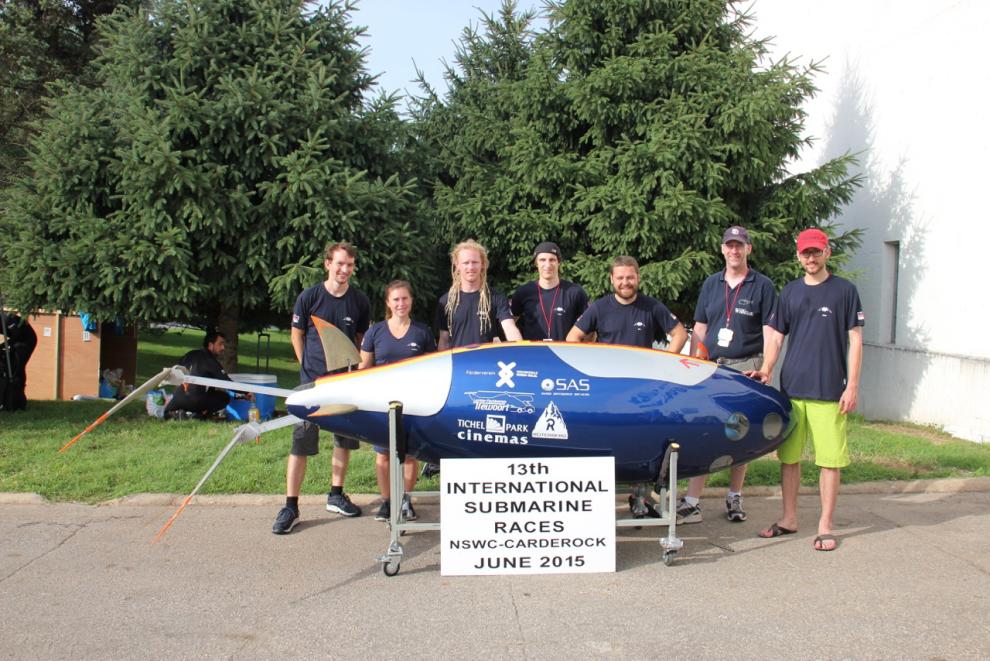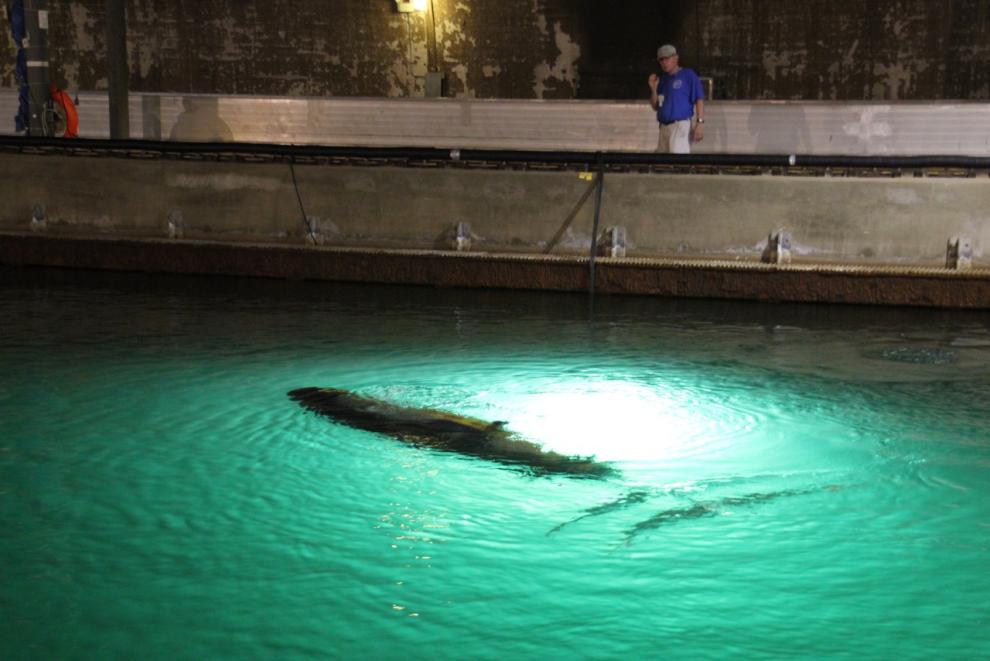HSRW Submarine Team takes second place in Washington
Rhine-Waal University’s HSRW Submarine Team has won big at this year’s 13th International Submarine Races (ISR) in the United States, earning a spectacular second place finish with their self-engineered, human-powered submarine ‘INIA’ and beating out 23 other teams from eight different countries. In addition, the HSRW Submarine Team also took first place in the subcategory “Non-Propeller Female (College)”. Of the many universities taking part in the annual competition, only one was representing Germany: Rhine-Waal University of Applied Sciences.
Kleve/Kamp-Lintfort, July 27, 2015: The HSRW Submarine Team of the Faculty of Technology and Bionics, Rhine-Waal University of Applied Sciences, raced their way to a smashing finish at the 13th International Submarine Races, held near Washington D.C. As the only team representing Germany, six members of the team of twelve took part in the international competition with their self-constructed submarine ‘INIA’, beating out 23 other teams from eight different countries to take second place. “We’ve spent a lot of time developing and improving our submarine design, especially its biomimetic propulsion system. The chance to take part in competitions, and even win international awards, is a constant source of motivation for us”, said a very pleased Leandra Hamann, graduate student in the Bionics/Biomimetics M.Sc. programme. As the team’s pilot, Leandra also took home an individual award in the subcategory “Non-Propeller Female (College)”.
Over the course of the five day event, the HSRW Submarine Team had the chance to measure themselves and their self-engineered submarine against the other 23 teams in numerous technical and athletic competitions. Following an initial ‘Dry and Wet Check’ stage, teams took part in multi-round time trials in a 100 metre long pool, competing at depths of up to 6.5 metres. After a few last-minute repairs and improvements, the HSRW Submarine Team successfully completed the first round of racing. Another nine rounds of racing followed over the subsequent days of the competition.
On the final day, the team made a strategic decision to swap out INIA’s fins. The team had been using thin swordfish-like fins constructed to reach high speeds, however the design forced the team to sacrifice stability for speed. As a result, the fins began showing signs of wear due to the significant propulsion forces generated over the first four days of competition. The team quickly decided to mount a new set of fins, this time based instead on a river dolphin and developed for strong acceleration. This change in strategy paid off and the team was able to secure second place in the competition.
In 2014 the HSRW Submarine Team also won accolades at the European International Submarine Race (eISR) in the UK, where they were awarded the “Outstanding Innovation Prize” for INIA’s design. Since then, the team has been working feverishly on improving the design and performance of their submarine. The pilot’s viewing windows in the bow were redesigned, for example, the existing steering and safety mechanisms were rebuilt and thoroughly tested, and a newer, more efficient propulsion system was designed and built. As in earlier iterations, INIA remains a biomimetic submarine inspired by different aquatic animals. Its body, for example, is based on the natural shape of a tuna fish, and its original fin design was inspired by dolphin fins. What makes INIA truly unique, however, is its specially-engineered propulsion mechanism. Instead of a propeller-driven propulsion systems found on many submarines, INIA uses a special biomimetic propulsion system which drives the craft’s fins and propels it through the water like a fish. The pilot, who lies face down inside the submarine body, uses his or her own muscle strength to generate thrust and steer the submarine. This human-driven design aspect is an important prerequisite for participating in the annual ISR competition.
Earlier this year, members of the HSRW Submarine Team presented their submarine at the 2015 Hannover Messe, one of the largest and most renowned technology expos in the world. Together with representatives of the Westphalian University of Applied Sciences, the Universität Bremen and AIRBUS, the team displayed INIA to visitors at a jointly-run biomimetic-themed booth, which was organised by the German Bionics Competence Network (BIOKON).
For additional information and videos, please visit www.subrace.eu or the HSRW Submarine Team’s Facebook page, which you’ll find under ‘HSRW Submarine-Team’.



